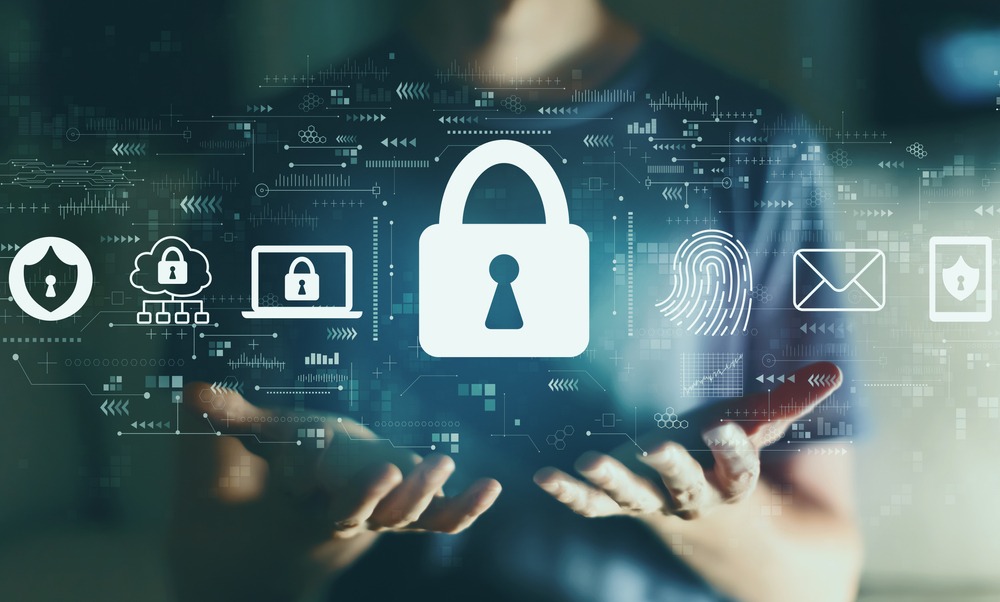In the ever-evolving healthcare landscape, dental practices increasingly incorporate digital technology. From electronic health records (EHRs) to digital imaging and cloud-based appointment scheduling, the digitization of dentistry has brought about unprecedented efficiency and patient care improvements. However, this shift also introduces a critical challenge: the need for robust cybersecurity measures to protect sensitive patient data.

Cybersecurity in the dental sector is not just about safeguarding digital systems but also about ensuring the privacy and trust of patients who entrust their personal health information to their dental providers. Understanding and implementing strong cybersecurity protocols has become indispensable as dental practices navigate this digital transformation.
CURRENT LANDSCAPE OF CYBERSECURITY IN DENTAL PRACTICES
The healthcare sector, including dentistry, is a prime target for cyber threats, with increasing incidents reported yearly. According to a report by the American Dental Association, dental practices are not immune to these threats, ranging from data breaches to sophisticated ransomware attacks. Ransomware attacks hit the Association itself in 2022.
The sensitive nature of patient information held by dental practices, from personal identification details to health history, makes them a lucrative target for cybercriminals. Common cyber threats encountered by dental practices include:
- Phishing Attacks: Cybercriminals use fraudulent emails or messages that mimic legitimate communications to trick individuals into revealing sensitive information or installing malware.
- Ransomware: Malicious software that encrypts a user’s files, with the attacker demanding payment to restore access. Dental practices’ reliance on electronic records makes them particularly vulnerable to such attacks.
- Data Breaches: Unauthorized access to or disclosure of patient information can occur through various means, including hacking, lost or stolen devices, and inadvertent disclosure.
WHY CYBERSECURITY MATTERS IN DENTISTRY
Dental practices handle sensitive information that goes beyond basic patient identification. This can include detailed health histories, insurance information, and financial transactions. Protecting this data is not only a matter of privacy but also of legal compliance. Regulations such as the Health Insurance Portability and Accountability Act (HIPAA) in the United States mandate the protection of patient health information, with significant penalties for breaches.
The implications of data breaches extend far beyond compliance issues. Financially, the costs associated with a data breach can be substantial, covering legal fees, fines, and measures to mitigate the impact, such as identity theft protection services for affected patients. Moreover, a breach can severely damage a practice’s reputation, losing patient trust, which is difficult and time-consuming to rebuild. In dentistry, where patient relationships are foundational, the reputational damage from a cybersecurity incident can be particularly devastating.
Therefore, cybersecurity in dentistry is not just about technology; it’s about safeguarding the essence of patient care and trust. As dental practices continue to embrace digital solutions, the importance of cybersecurity cannot be overstated.
BEST PRACTICES FOR ENHANCING CYBERSECURITY IN DENTAL PRACTICES
Ensuring the cybersecurity of a dental practice is pivotal in the digital age, where cyber threats loom large over the confidential patient data handled daily. Here’s a comprehensive guide to fortifying your practice against these digital dangers.
EMPLOYEE TRAINING AND AWARENESS
The first line of defense in cybersecurity is your staff’s awareness and preparedness. Employees should undergo regular training sessions on cybersecurity best practices and be able to recognize common cyber threats, such as phishing attempts. Phishing scams, which often appear as legitimate emails asking for sensitive information, can lead to unauthorized access if not properly identified. Training should also cover secure practices for handling patient information, the importance of using strong passwords, and the procedures for reporting suspected cybersecurity incidents.
DATA ENCRYPTION
Data encryption transforms readable data into an encoded format that can only be accessed or decrypted by someone with the correct encryption key. This practice is crucial for protecting patient information at rest (stored data) and in transit (data being transmitted over the Internet).
For instance, when a patient’s information is sent from the dental office to insurance companies, encryption ensures that the data remains unreadable to unauthorized parties even if intercepted. Encryption technologies protect patient data from potential breaches, safeguarding the practice and the patient’s privacy.
ACCESS CONTROLS AND AUTHENTICATION
Implementing stringent access controls and authentication methods is essential to limit access to sensitive data within your practice. Access controls ensure that only authorized personnel can access certain information based on their roles and responsibilities. For example, receptionists may need access to scheduling information but not patients’ medical records.
Authentication methods, such as two-factor authentication (2FA), add an extra layer of security by requiring users to provide two different authentication factors to verify themselves. It could include something they know (a password) and something they have (a code sent to their phone), significantly reducing the risk of unauthorized access.
SECURE NETWORK CONFIGURATIONS
A cornerstone of cybersecurity in dental practices is the establishment of secure network configurations. This involves setting up the practice’s network infrastructure to maximize security while minimizing vulnerabilities. Key components include:
- Using strong encryption for Wi-Fi networks.
- Segmenting networks to separate patient data from other less sensitive operational data.
- Ensuring remote access protocols for remote employees.
REGULAR SOFTWARE UPDATES AND PATCH MANAGEMENT
Cyber attackers often exploit vulnerabilities in outdated software to gain unauthorized access to systems. Regularly updating and patching software and systems is vital to protect against known vulnerabilities. Software developers frequently release updates that fix security holes and improve the overall security of their products.
By ensuring that all software, including operating systems, management software, and antivirus programs, are up to date, dental practices can shield themselves from many common cyber threats.
SECURE DATA BACKUP
Secure data backup is a critical strategy for mitigating the impact of a cybersecurity incident, such as ransomware attacks, where attackers encrypt a practice’s data and demand a ransom for its release. Regularly backing up data ensures that a dental practice can restore its information from a recent backup without paying the ransom in the event of such an attack.
Backups should be performed frequently, stored securely, and tested regularly to ensure they can be reliably restored. Ideally, practices should follow the 3-2-1 backup rule: keep three copies of data on two different media, with one backup located offsite.
IMPLEMENTING A CYBERSECURITY FRAMEWORK
Adopting a cybersecurity framework is a structured approach to managing and mitigating cybersecurity risks in dental practices. Such a framework provides a comprehensive roadmap for assessing current security measures, identifying vulnerabilities, and implementing enhanced security protocols.
The process begins with assessing the existing cybersecurity posture, followed by planning to address identified gaps, and culminates in implementing targeted measures to bolster cybersecurity defenses. This iterative process ensures continuous improvement and adaptation to evolving cyber threats.
For dental practices, a tailored cybersecurity framework might include specific considerations for patient data privacy, regulatory compliance, and the unique technological ecosystem of dental operations.
CYBERSECURITY TOOLS AND TECHNOLOGIES
In the quest to fortify cybersecurity, dental practices have a variety of tools and technologies at their disposal. These range from antivirus and antimalware software to firewall protections and intrusion detection systems.
Encryption tools also play a crucial role in securing stored and transmitted data. Dental practices must adopt a vendor-neutral stance when selecting these cybersecurity solutions, ensuring that the chosen technologies best fit their specific needs without being tied to a single provider’s ecosystem. This approach allows for greater flexibility and adaptability as new threats emerge and technology evolves.
WRAPPING UP…
Integrating digital technologies in dentistry has undeniably enhanced patient care and operational efficiency. However, it also necessitates a heightened focus on cybersecurity to protect sensitive patient data against the ever-evolving landscape of cyber threats.
Dental practices can significantly mitigate their cyber risk by understanding the importance of cybersecurity, implementing best practices, adopting a tailored framework, utilizing appropriate tools and technologies, and fostering a culture of awareness.
The journey toward robust cybersecurity is continuous, requiring ongoing vigilance, adaptation, and commitment. Dental practices are encouraged to proactively engage with cybersecurity, not as a one-time effort but as an integral part of their daily operations, to safeguard the trust and privacy of their patients.
ABOUT THE AUTHOR
Patrick Chown is the owner and president of The Network Installers and Safe and Sound Security. The Network Installers specializes in network cabling installation, structured cabling, voice and data, audio/visual, commercial WiFi, and fiber optic installation for industrial and commercial facilities. Safe and Sound Security specializes in integrating security cameras, access control, burglar alarms, and structured cabling for industrial and commercial facilities.

Patrick Chown
FEATURED IMAGE CREDIT: TierneyMJ/Shutterstock.com.











